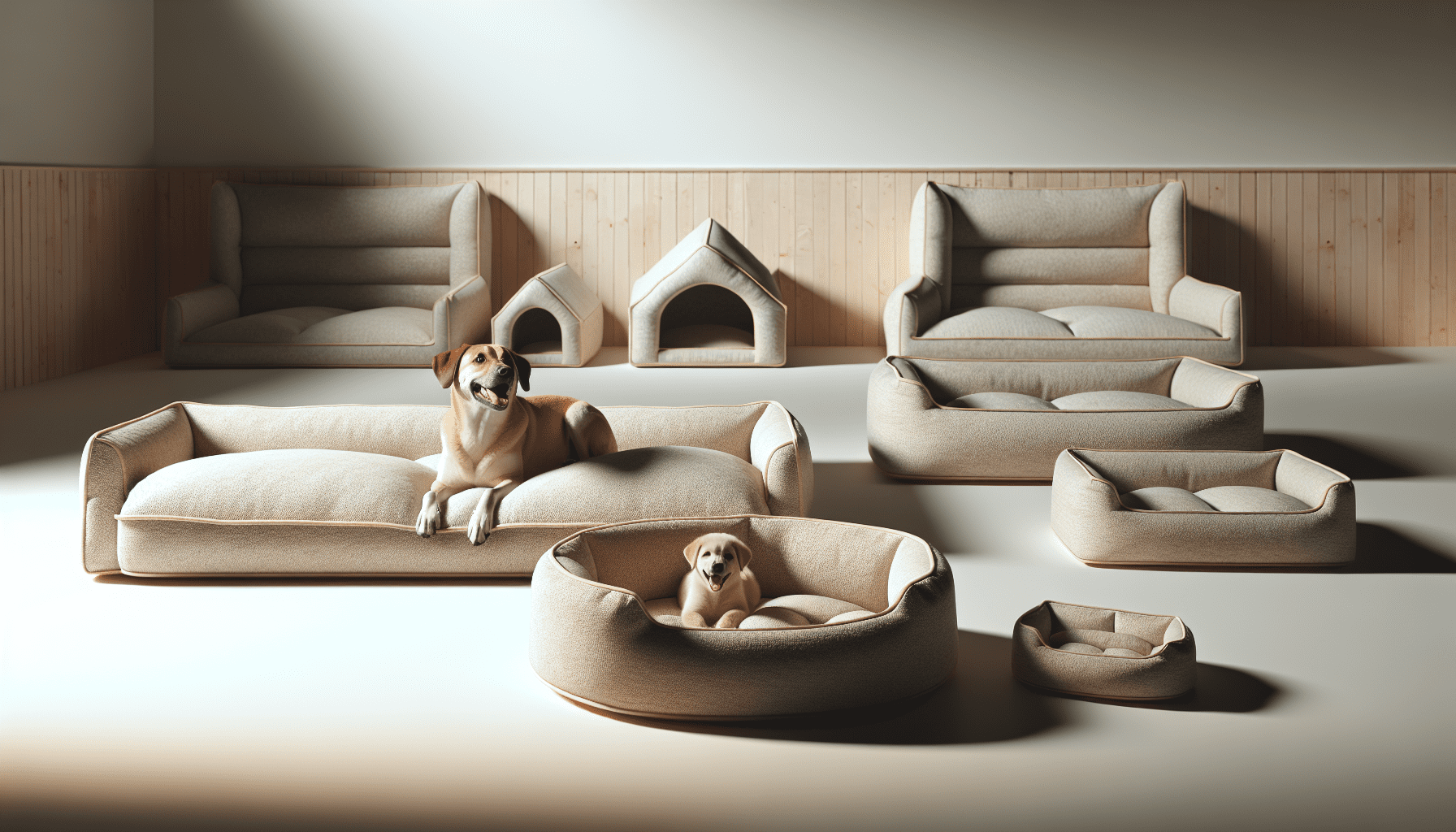Disclosure: This post has affiliate links, so I may earn a small commission (at no extra cost to you) if you shop through them. Thanks for your support!
Have you ever spent countless hours searching for the perfect dog bed, only to wonder if you chose the right size? Choosing the right size for your furry friend’s bed is crucial for their comfort and overall health. Let’s break down everything you need to know about determining the ideal bed size for your dog.
Understanding Your Dog’s Needs
Why Bed Size Matters
Choosing the right bed size for your dog is not just about aesthetics; it’s about ensuring comfort and support. A bed that is too small can restrict movement and cause discomfort, while a bed that is too large may not provide the sense of security your dog needs.
Factors That Affect Dog Bed Size
Several factors come into play when selecting a bed size for your dog. Knowing your dog’s breed, age, health condition, and sleeping habits will help you make an informed decision.
Measuring Your Dog
How to Measure Your Dog
Before you can choose the perfect bed, you’ll need to measure your dog accurately. Here’s a simple guide on how to do it:
- Get Your Dog to Stand: Have your dog stand on a flat surface. It’s easier to get accurate measurements when they’re standing.
- Measure Length: Use a measuring tape to measure from the tip of your dog’s nose to the base of their tail.
- Measure Height: Measure from the floor to the top of their shoulder. This is their shoulder height, which can be important if they enjoy resting their heads on raised edges.
- Measure Width: If your dog likes to stretch out when sleeping, measure their width by providing a bit of wiggle room.
Using these measurements will give you a solid understanding of the space your dog needs to lay comfortably.
Adding Extra Space
It’s often helpful to add a couple of additional inches to your measurements. A good rule of thumb is to add about 2-4 inches to the length and width of your dog’s measurements. This extra space allows them to move around, curl up, and shift positions comfortably.
Choosing the Right Bed Size
Size Categories
When shopping for dog beds, you’ll typically come across several size categories. Here are the common sizes you will find:
| Size | Recommended Weight Range |
|---|---|
| X-Small | Up to 10 lbs |
| Small | 10 – 25 lbs |
| Medium | 25 – 50 lbs |
| Large | 50 – 90 lbs |
| X-Large | 90 lbs and up |
These categories can serve as a general guideline, but always refer to the specific product’s recommendations, as designs may vary.
Bed Types and Size Considerations
Different types of beds cater to various sleeping styles and preferences. Here are a few options to consider:
Flat Beds
If your dog tends to spread out, a flat bed may be right for them. These beds usually have no walls and offer ample space for sprawling.
Nesting Beds
Nesting beds are great if your dog likes to curl up. However, make sure you choose a size that allows for your pet to stretch out comfortably as well, as some breeds enjoy both behaviors.
Orthopedic Beds
For older dogs, or those with joint issues, an orthopedic bed that supports their joints effectively is essential. Ensure you select a size that allows ample room for your dog to stretch and find a comfortable position.
Raised Dog Beds
These beds can keep your dog off the ground, which is ideal for outdoor use or warm climates. Choose a size that fits your pet’s body without crowding them too much.
Considering Your Dog’s Age and Health
Puppies and Growing Dogs
When choosing a bed for a puppy, think ahead. Puppies grow quickly, and investing in a bed that they can use as an adult could save you money in the long run. If going for a larger size, make sure it’s not overwhelming for them at their current size.
Senior Dogs
Older dogs might prefer beds that are softer and provide better support. Ensure they have adequate room to make adjustments while lying down, as their joints may require a bit more space than younger dogs.
Evaluating Sleeping Habits
Sleeping Positions
Understanding how your dog sleeps can guide your choice of bed size. Do they stretch out, curl up, or sleep on their side? Observing their sleeping position can help determine the necessary space they’ll need.
Stretching Dogs
If your dog enjoys stretching, opt for a larger bed. They should have enough room to lie down straight and not feel cramped.
Curled-Up Dogs
If your dog likes to curl up, you can go for a smaller bed. However, it’s still essential to ensure there’s enough space for occasional stretching.
Barking and Anxiety
Sometimes your dog’s sleeping habits can be influenced by anxiety or behavioral issues. If your dog is anxious, they may benefit from a snugger bed that provides them with a sense of security.
Choosing Between Multiple Dogs
Ensuring Space for Multiple Dogs
If you have more than one dog sharing a bed, you’ll need to consider their sizes and sleeping behaviors. Measure all of your dogs and take into account their individual preferences.
Shared Beds
For dogs that like to snuggle or share, a larger bed can be perfect. Consider a design that allows them to nest together comfortably, creating a shared sense of warmth and security.
Separate Beds
Some dogs prefer their space, and giving them each their own bed may be the best option. Make sure to choose appropriately sized beds that cater to each dog’s sleeping style.
Material Considerations
Comfort and Durability
The material of the dog bed contributes significantly to comfort and longevity. Look for beds made of high-quality materials that can withstand wear and tear while also providing comfort.
Memory Foam Beds
Memory foam beds are excellent for providing support and comfort, especially for older dogs. Make sure to select a size that offers enough space for your dog to shift positions without feeling confined.
Cotton and Synthetic Materials
Cotton and synthetic materials are great for everyday use and can provide a cozy sleeping experience. Ensure that the bed is breathable, particularly in warmer climates.
Allergies and Sensitivities
If your dog has allergies or sensitivities, you may want to select hypoallergenic materials that reduce the likelihood of skin irritations.
Style and Design
Coordinating with Your Home Decor
While functionality is key, you might also want to consider the aesthetics of your dog’s bed. Dog beds come in various styles, colors, and patterns. Choose one that complements your home decor while ensuring it’s the right size for your dog.
Practical Designs
Look for designs that offer ease of cleaning, such as removable, washable covers. Beds with waterproof liners can also provide additional protection against spills or accidents.
Final Thoughts
Choosing the right size dog bed involves understanding your dog’s needs, measuring carefully, observing their sleeping habits, and considering their health conditions. Taking the time to do your research can lead to a purchase that keeps your furry friend comfortable and content for years to come.
With this guide, you’re armed with the knowledge necessary to select the perfect bed size for your beloved companion. You want to ensure they get the restful sleep they deserve, so take your time and make the choice that’s best for both of you!
Related blog post:
Disclosure: This post has affiliate links, so I may earn a small commission (at no extra cost to you) if you shop through them. Thanks for your support!






